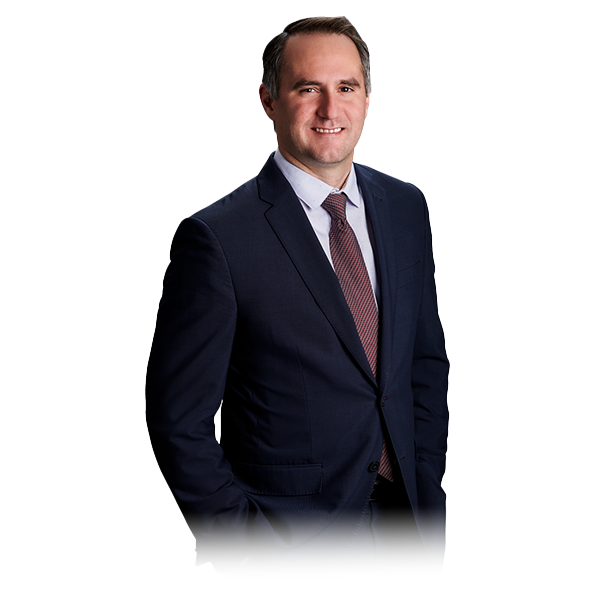Malitskiy v. Unica Insurance Inc., 2021 ONSC 4603 has provided clear guidance on the Divisional Court’s jurisdiction in hearing appeals from the Licence Appeal Tribunal (LAT) and the standard of review to be applied, the calculation of attendant care benefit entitlement under the Statutory Accident Benefits Schedule (SABS) in accordance with the rates set out in the applicable Guideline, and the proper application of the test for a special award.
Procedural History
The Appellant, Sergey Malitskiy, was involved in a motor vehicle collision on March 16, 2014, where he suffered significant physical, psychological and cognitive injuries including a traumatic brain injury and multiple fractures. His accident benefits insurer, the Respondent Unica Insurance Inc. (“Unica”), determined that he was catastrophically impaired in February 2017.
Mr. Malitskiy commenced a LAT Application on October 25, 2018 for medical and rehabilitation benefits, including costs of attendant care, costs of home modifications, costs of examinations, and seeking a special award regarding same.
Adjudicator Nidhi Punyarthi released her decision on January 2, 2020, determining that Mr. Malitskiy was entitled to all the attendant care benefits he had incurred “up to” a maximum of $6,000 per month; the total cost of all modifications to his home; costs of an assessment of his housing needs; interest and a special award amounting to 25% of the portions of the attendant care benefits and the home modifications that had been denied.
Unica requested reconsideration of Adjudicator Punyarthi’s decision at the LAT on two grounds. First, Adjudicator Punyarthi’s award of attendant care benefits “up to” $6,000.00 per month, when divided by the number of hours actually invoiced and incurred, led to hourly rates well in excess of the maximum amount prescribed by the applicable Guideline authorized by the SABS. Second, Unica asserted that Adjudicator Punyarthi “watered down” the threshold of what constitutes an unreasonable withholding or delay of benefits warranting a special award.
Adjudicator Jesse A. Boyce released his reconsideration decision on June 25, 2020, finding in favour of Unica. Adjudicator Boyce held that it was an error for adjudicators to order attendant care “up to” a certain amount or the maximum amount identified under the SABS. He determined that the effective hourly rate and its relationship to the amounts specified in the Attendant Care Hourly Rate Guideline and Form 1 must be accounted for, and re-calculated Mr. Malitskiy’s attendant care benefit entitlement accordingly. Adjudicator Boyce further held that the special award was not supported by the evidence regarding Unica’s conduct, nor were the reasons supporting the award sufficient to justify the magnitude of it, such reasoning watering down the threshold of what constitutes unreasonable withholding and delay.
Mr. Malitskiy subsequently appealed the reconsideration decision to the Divisional Court.
Jurisdiction of the Divisional Court and the Standard of Review
Justice Lederer (for the unanimous panel including Justices Corbett and Pattillo) began by outlining that the jurisdiction of the Divisional Court to hear the appeal is found in the License Appeal Tribunal Act at sections 11(1) and (6), which limits the appeal to a question of law only. The Divisional Court’s limited jurisdiction is underscored by the broader criteria for reconsideration under Rule 18.2 of the Common Rules of Practice & Procedure of the Licence Appeal Tribunal on the basis of the Tribunal acting outside of its jurisdiction, violating the rules of natural justice or procedural fairness, the making of an error of law or fact that likely would have resulted in a different outcome, the hearing of false or misleading evidence only discovered after the hearing and likely affecting the result, and/or the existence of new evidence not previously obtainable that would likely have affected the result.
Justice Lederer noted that reconsideration at the LAT can be undertaken without deference to the original decision, and the Tribunal may set aside not only errors of law but findings of fact if the alteration would have caused a different result.
Justice Lederer specifically rejected the argument that reconsideration is only for “significant” errors, as the argument was premised on an outdated version of Rule 18.2 which included the “significant” qualifier.
Justice Lederer quoted the decision of the Supreme Court of Canada in Canada (Minister of Citizenship and Immigration) v. Vavilov, 2019 SCC 65 where it was determined that appellate standards of review are to be applied on statutory appeals. Accordingly, the standard of review regarding reconsideration decisions is correctness: in essence whether an adjudicator was incorrect in their understanding of the applicable legal principles. Justice Lederer made clear that it was not a question of the proper application of the facts to those principles, as that would be a question of mixed fact and law outside the jurisdiction of the court under the License Appeal Tribunal Act.
Attendant Care
Justice Lederer observed that Adjudicator Punyarthi, in awarding Mr. Malitskiy attendant care benefits “up to” $6,000.00 per month, failed to take into account the hourly rates charged, paid or calculable from the value of the benefit awarded or the hours spent by attendant care service providers. Adjudicator Punyarthi’s decision was driven by the limitation on the monthly attendant care benefit at s. 19(3) of the SABS, which states that the amount of attendant care benefits payable shall not exceed $6,000.00 per month (plus HST) for catastrophically impaired persons.
Justice Lederer noted that Adjudicator Boyce found it to be an error to simply look at the expense as presented on an invoice and order payment without considering the number of hours of services received per the hourly rates established by the Assessment of Attendant Care Needs (Form 1) and/or the Attendant Care Hourly Rate Guideline, and that it was accordingly an error to award an amount “up to” $6,000.00. Adjudicator Boyce held a plain reading of SABS s. 19(2) made it clear that the required components to calculate attendant care were not considered.
Justice Lederer held that SABS s. 19(2) sets out, and makes plain, that the amount of monthly attendant care is determined in accordance with the version of the Form 1 required to be submitted under s. 42 by an occupational therapist or registered nurse. The Form 1 is to multiply the total number of hours per month of each type of attendant care listed (routine personal care, basic supervisory functions, and complex healthcare and hygiene) by an hourly rate that does not exceed the maximum established by the Guideline. The total amount calculated under the Form 1 is not to exceed the maximum established by s. 19(3), being (in this case) $6,000.00.
Justice Lederer held that Adjudicator Punyarthi did not rely on or refer to the hourly rates in the Guideline, and did nothing more than look at the total monthly amount being claimed and, it being slightly higher than the permitted maximum, limited the benefit to the $6,000.00 per month maximum.
Justice Lederer further emphasized that the applicable Guideline, Superintendent’s Guideline No. 03/10 (Attendant Care Hourly Rate Guideline) dated June 2010, made clear that it established the maximum expense that automobile insurers are liable to pay under the SABS for attendant care services according to the rates imposed for each level of attendant care.
This raised further issues with Adjudicator Punyarthi’s decision, as Justice Lederer pointed out that SABS s. 19(3) at paragraph 5 states that if attendant care providers provide services at a cost lower than the amount of the monthly care benefit determined under the Form 1, the insurer is only liable to pay for the incurred expenses. In awarding “up to” $6,000.00 in monthly attendant care benefits, this led to the effective rate for the incurred hours submitted being well above the maximum rates established under the Guideline, as pointed out by Adjudicator Boyce in his reconsideration decision. Justice Lederer held that Adjudicator Punyarthi gave no consideration to the impact of lower invoiced hours on the effective hourly rate in her decision to award “up to” the $6,000.00 maximum, whereas Adjudicator Boyce specifically addressed and rectified the error.
Justice Lederer held that it was self-evident that if this error had not been made, the result would have been different.
Justice Lederer went on to specifically reject Mr. Malitskiy’s argument that s. 19(2) merely sets the basis for calculating the monthly attendant care benefit, and that the value of the benefit having set, the justification for it (the number of hours claimed and the hourly rates charged) does not have to be related to the calculation authorizing the benefit.
Justice Lederer held that to accept that argument would be to allow a claimant to spend their attendant care benefits, within the framework of attendant care, however they chose, including on a specific need at fewer hours and at a higher rate than permitted by the Guideline. The only remaining control would be the direction found in the introductory words of s. 19(1) that attendant care benefits pay for all “reasonable and necessary expenses”. This would mean that every time there was a significant variation from the activities, hours, or hourly rates incurred there would be a need to determine whether they were “reasonable and necessary”, the very issue which the calculation under s. 19(2) is meant to resolve. This would turn the decision to pay attendant care benefits from an objective exercise (receive the invoice, make the payment) to a subjective one involving potential expert advice as to whether the treatment was reasonable or necessary.
Justice Lederer further rejected Mr. Malitskiy’s argument that a Bulletin released concurrently with an updated Guideline, explaining that previous guidelines could be interpreted to strictly apply the maximum hourly rates as the maximum payable for attendant care services as opposed to using the hourly rates to calculate a monthly benefit as originally intended, demonstrates that the applicable earlier Guideline should be interpreted accordingly.
Justice Lederer reiterated the wording of the applicable Guideline that insurers are not liable to pay for expenses related to attendant care costs that exceed the maximum hourly rates. Justice Lederer further held that the wording of a Bulletin, particularly one concerned with understanding the revised but inapplicable form of the Guideline, cannot set aside or overrule the words of the earlier Guideline as it applied to the case at bar.
Finally, Justice Lederer rejected the argument that Adjudicator Boyce’s interpretation of the SABS and the Guideline is contrary to policy, as the SABS only accounts for rates far below market value. Justice Lederer explained the policy history behind the SABS, noting that previously those injured in accidents had to proceed through the tort system, including trial, before being compensated. Per Justice Lederer, the SABS represents the ongoing effort of the Legislature to impose a partial no-fault regime to allow for some compensation at the outset, while ensuring that insurance rates are not unreasonably high. Even where injuries are catastrophic, it is not expected that full compensation of any particular expense would necessarily be received through the SABS regime. Justice Lederer emphasized that the Legislature has not adopted a full no-fault scheme.
Justice Lederer therefore held, for the reasons above, that Adjudicator Boyce did not err in law in setting aside and revising Mr. Malitskiy’s attendant care costs.
Special Award
Justice Lederer reiterated that the jurisdiction of the LAT to make a special award is found in O. Reg. 664, R.R.O. 1990 s. 10, which states that if the LAT finds that an insurer has unreasonably withheld or delayed payments, in addition to awarding benefits and interest, it may also award a lump sum of up to 50% of the amount to which the person was entitled at the time of the awards together with interest compounded at 2% per month from the time the benefits first became payable.
Justice Lederer further outlined that the test for what constitutes unreasonable behaviour is set out in the Ontario Insurance Commission decision of Plowright v. Wellington Insurance Co., [1993] O.I.C.D. No. 62, namely behaviour which is excessive, imprudent, stubborn, inflexible, unyielding or immoderate. Justice Lederer emphasized that the determination of whether a special award is payable is a fact-specific analysis to be completed by the adjudicator.
Adjudicator Boyce held that the reasons cited by Adjudicator Punyarthi to support the special award did not meet the test set out in Plowright. He found that the failure of Unica to provide their home modification assessor with Mr. Malitskiy’s medical file did not amount to an intentional withholding, especially given that it was unclear whether it was requested and the assessment was not medical in nature. He similarly found that Adjudicator Punyarthi erroneously held insurance adjusters to the same standards as medical professionals in justifying the special award, finding it unreasonable, among other things, for insurance adjusters to ensure medical professionals ask questions about cuing, emotional support, and nightly supervision.
Justice Lederer found that none of Adjudicator Boyce’s findings amounted to an error of law, as they were considerations of fact or of mixed fact and law and were not reviewable by the Court.
Justice Lederer further endorsed Adjudicator Boyce’s conclusion that while Adjudicator Punyarthi used the objectives from Plowright in granting the special award, she failed to actually engage in an analysis of how Unica’s conduct was analogous to that case or to the conduct of insurers in other special award cases. Adjudicator Boyce went on to state that while s. 10 provides discretion to an adjudicator in granting a special award, that discretion, once exercised, requires precision in the form of specific and accurate details of unreasonable conduct to support and justify the percentage awarded to ensure the insurer understands the rationale.
Justice Lederer held that this was a “correct understanding and a proper application of the legal principle involved” and that accordingly there was no error of law made by Adjudicator Boyce.
Justice Lederer therefore dismissed the appeal.
Takeaway
Malitskiy v. Unica Insurance Inc. provides clear guidance as to what is within the scope of the Divisional Court’s jurisdiction to hear an appeal from the LAT (only questions of law) and the applicable standard of review (correctness). The decision also makes clear that any calculation of an attendant care benefit must be in accordance with the applicable Form 1 and the hourly rates for attendant care services set out in the Attendant Care Hourly Rate Guideline, and that the rationale for same is clearly set out in the SABS, Guideline, and underlying policy considerations. Finally, Malitskiy emphasizes that simply referring to the “buzzwords” of behaviour which is excessive, imprudent, stubborn, inflexible, unyielding or immoderate in making a special award is not enough, and that specific and concrete examples of such behaviour are required.
Dakota Forster is a member of the Appellate and Licence Appeal Tribunal (LAT) practice groups, and is the author of this blog. If you have a question about this decision or a similar file, please contact Dakota at 647-427-3334.













